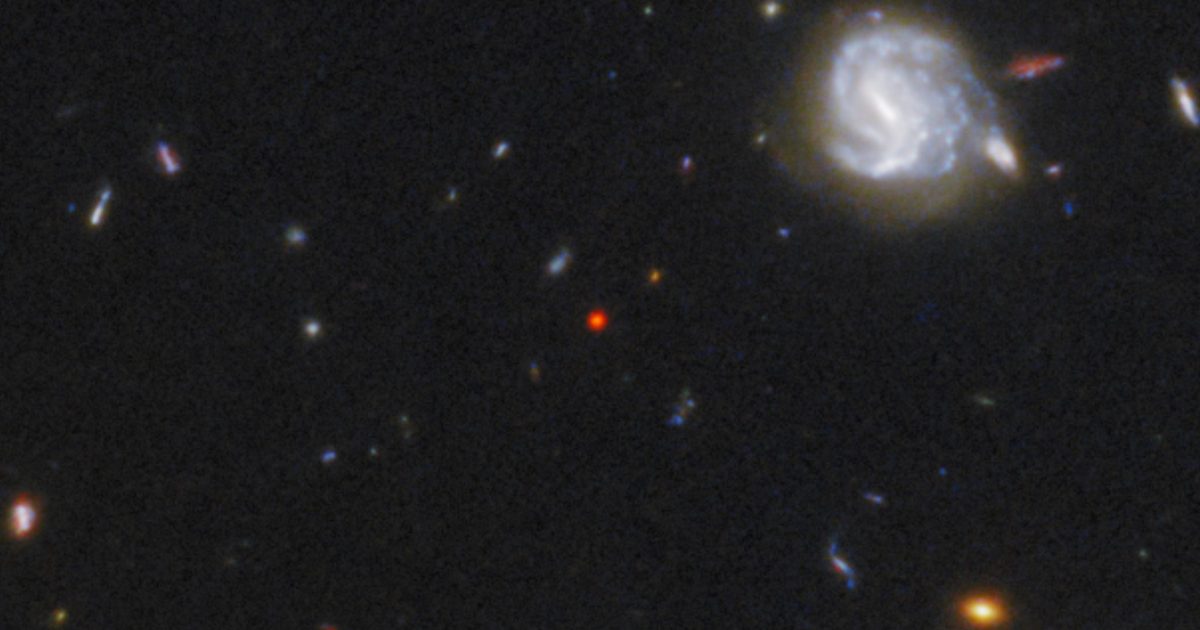Sign up for the Starts With a Bang newsletter
Travel the universe with Dr. Ethan Siegel as he answers the biggest questions of all.
To discover what’s out there in the Universe, you simply have to look.
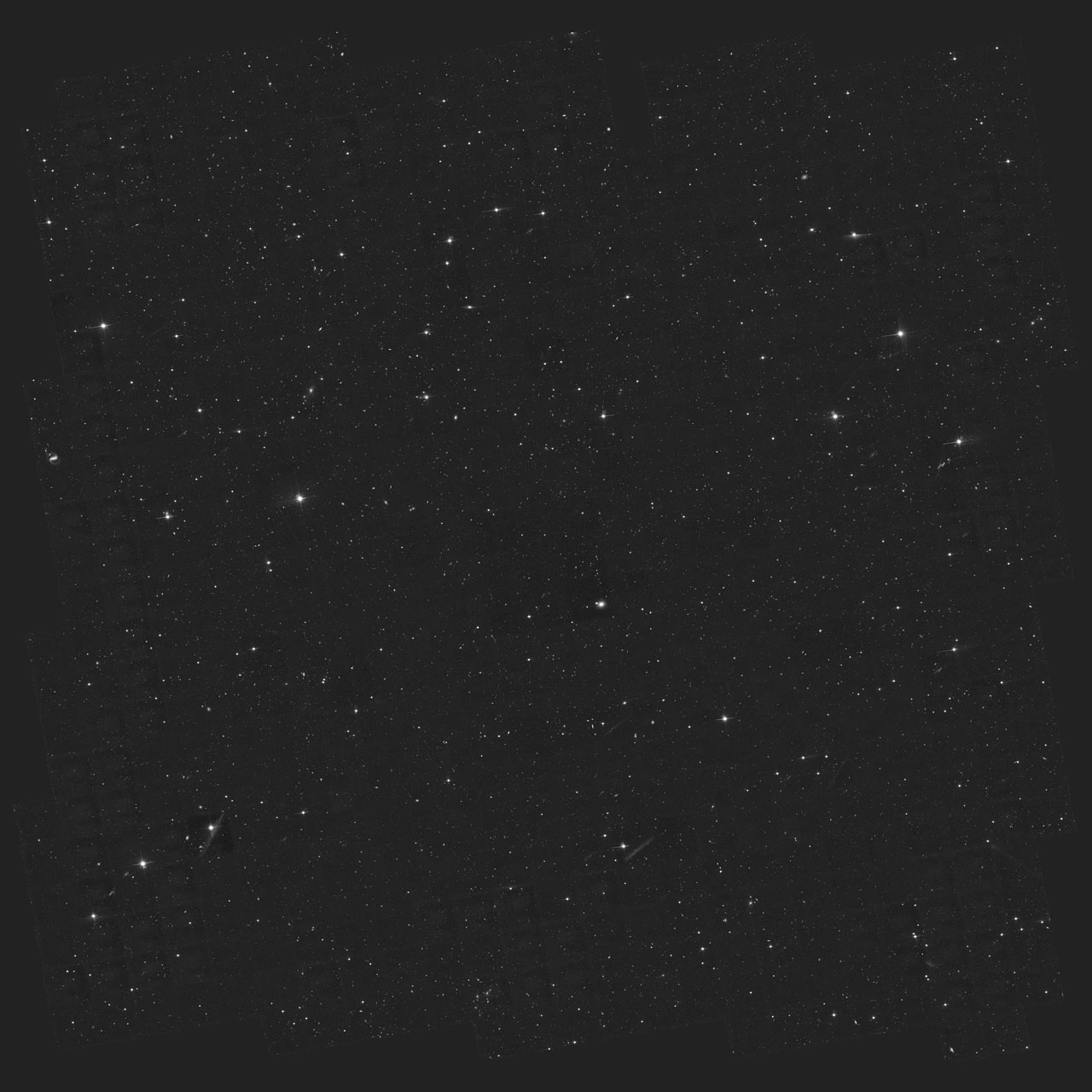
This image shows the full COSMOS (Cosmic Evolution Survey) from the Hubble Space Telescope: its largest ever survey of the Universe. Hubble photographed 575 adjacent and slightly overlapping views of the universe using the Advanced Camera for Surveys’ (ACS) Wide Field Camera onboard Hubble, requiring nearly 1000 hours of observations. At full resolution the image would be 100,800 x 100,800 pixels.
Credit: NASA, ESA and A. Koekemoer (STScI)
But only by looking in the right ways can you uncover all that’s present.
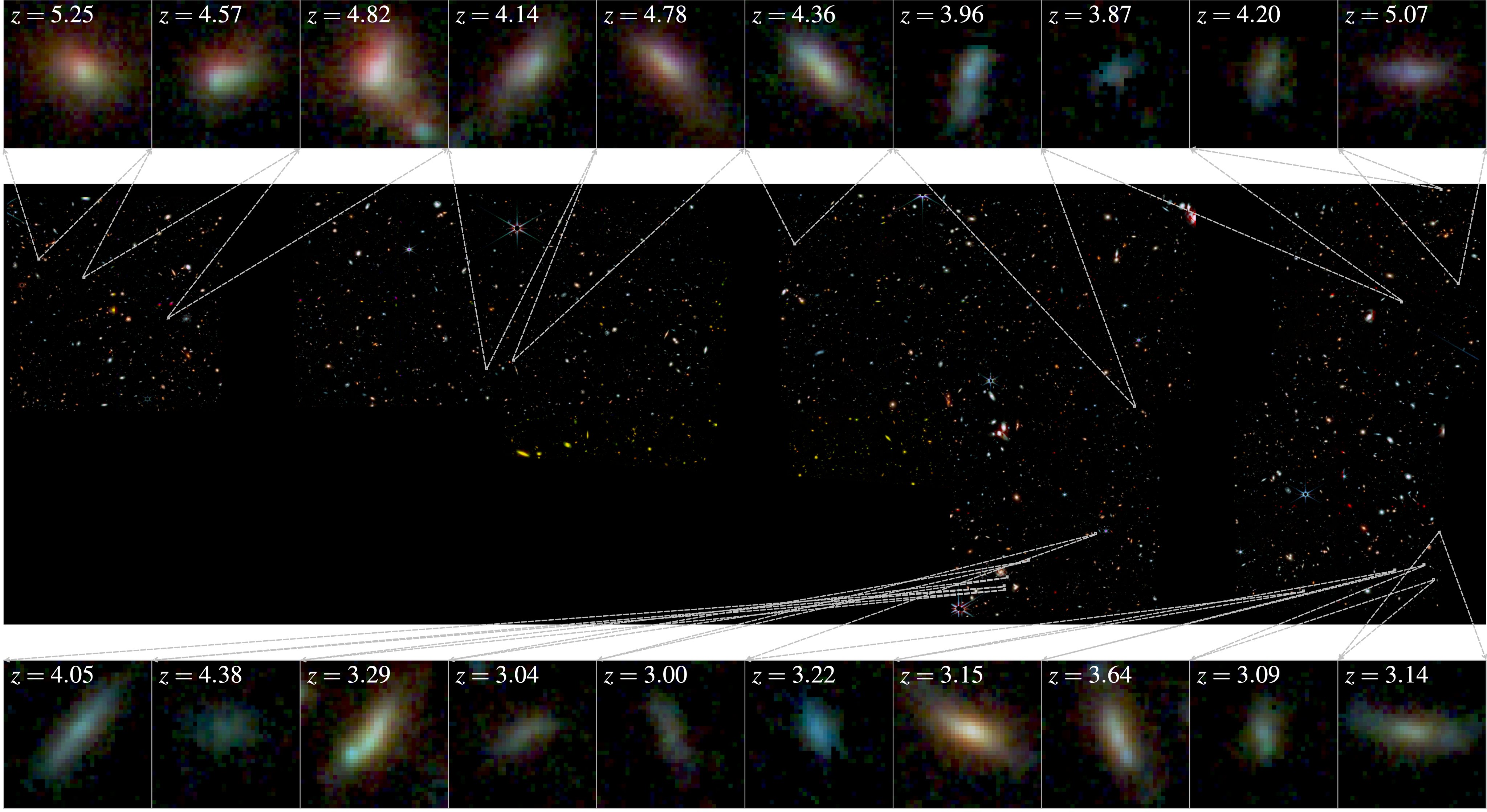
The Cosmic Evolution Early Release Science Survey (CEERS Survey) broke the record for largest deep-field image taken by JWST and held it for several months in 2022, a record that was previously held by the first lensing cluster image released. This small patch of sky, near the handle of the Big Dipper, contains some ~200 luminous disk galaxy candidates found within the first ~3 billion years of the Universe’s history. The deepest views of the early Universe have given astronomers and astrophysicists much to ponder.
Credit: NASA, ESA, CSA, STScI; CEERS collaboration
You must look:
- deeply, with long-exposures, revealing faint and distant targets,

Imaged here in 9 different wavelength filters (from 0.9 to 4.8 microns) for a total of 120 hours, this JWST view of Abell S1063 is one of the most massive clusters ever imaged with deep field techniques. Many gravitationally lensed features can be clearly seen even with the naked eye.
Credit: ESA/Webb, NASA & CSA, H. Atek, M. Zamani (ESA/Webb); Acknowledgement: R. Endsley
- wide, at large areas, to capture rare objects,
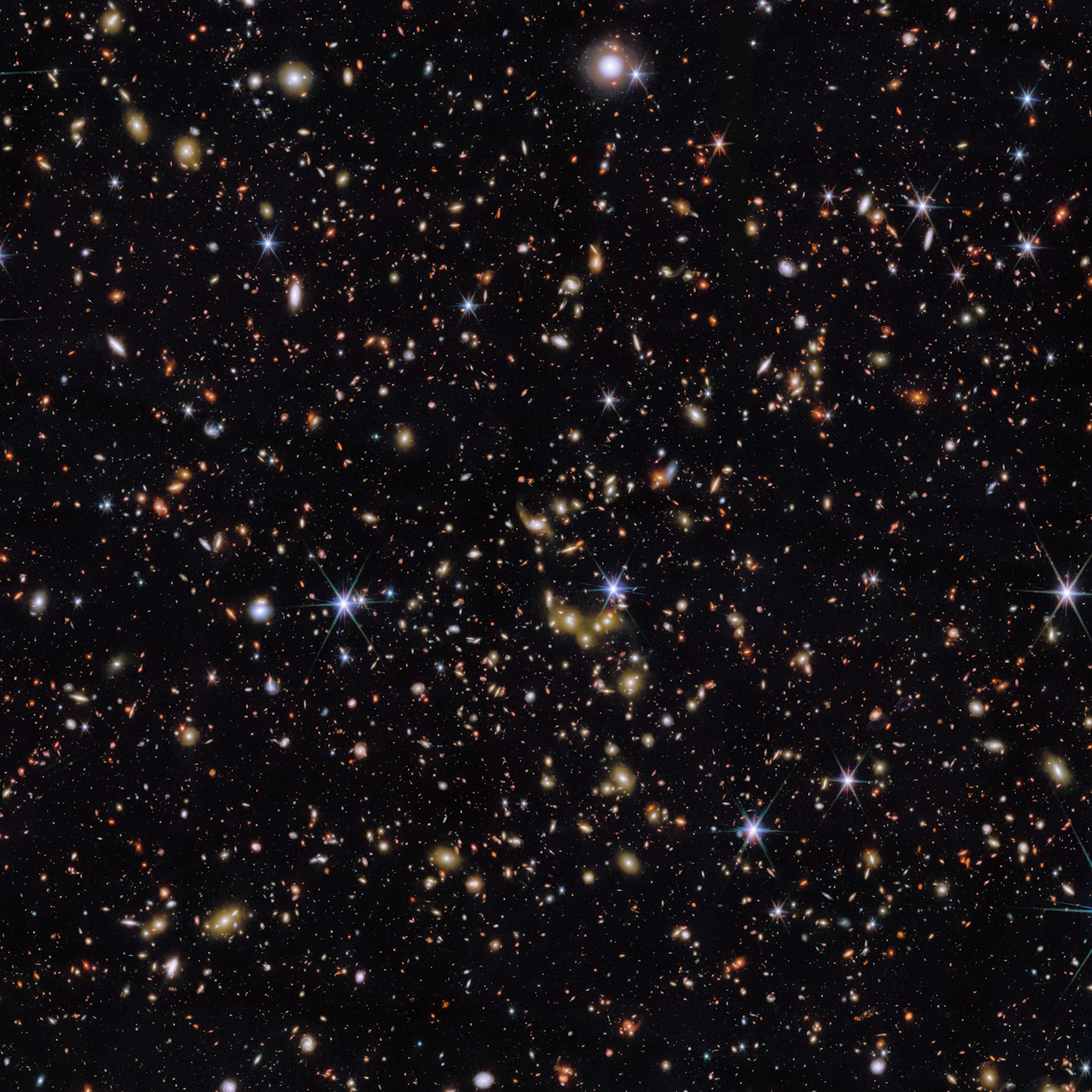
This low-resolution image shows the full field of the COSMOS-Web survey conducted with JWST. Spanning 0.54 square degrees in the sky, or nearly three full Moons’ worth of area, this represents the largest, deepest wide-field view of the Universe ever acquired.
Credit: ESA/Webb, NASA & CSA, G. Gozaliasl, A. Koekemoer, M. Franco, and the COSMOS-Web team
- and across multiple wavelengths, unveiling the properties of entities.
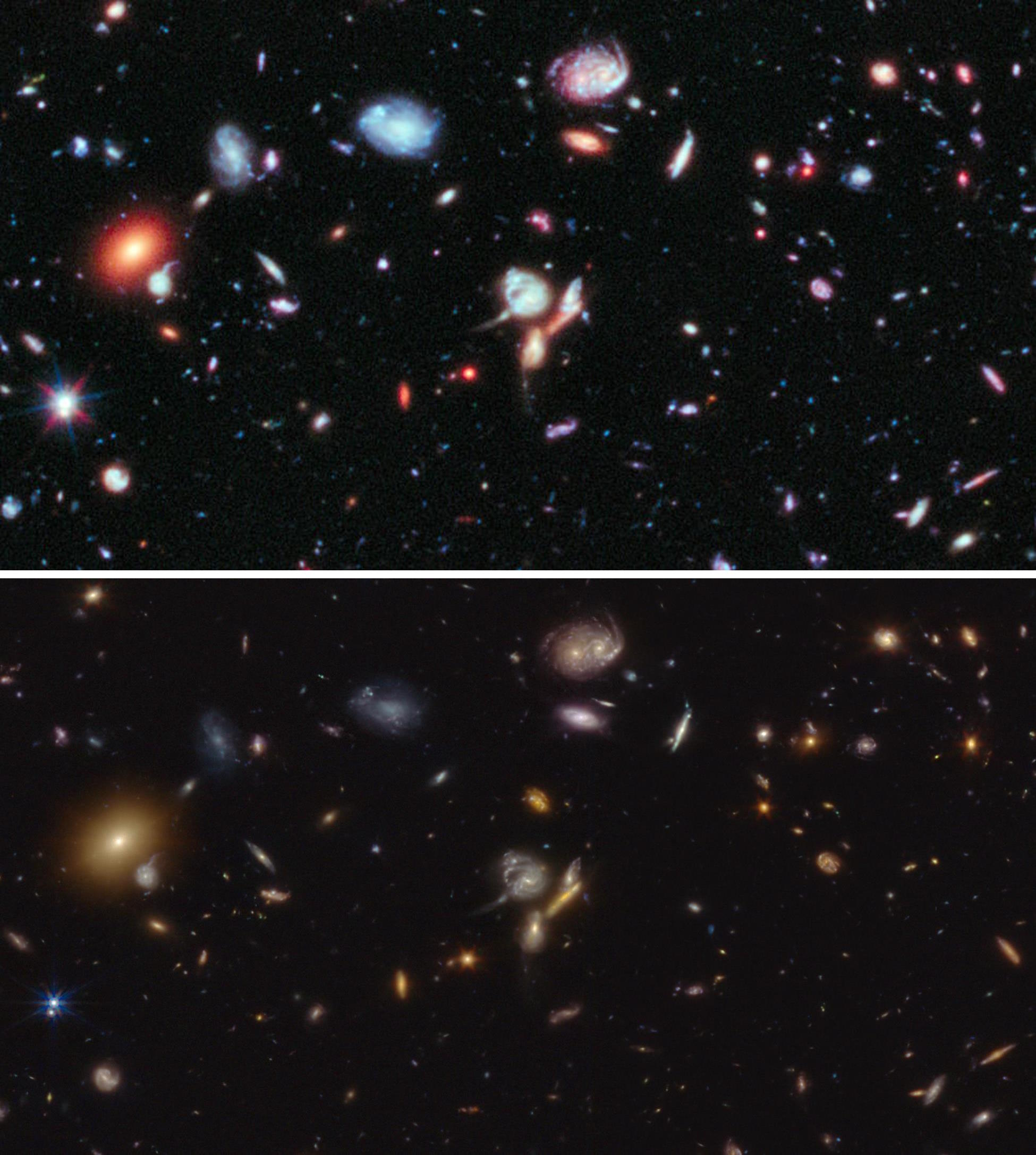
This comparison image, showing the same region as imaged by Hubble’s eXtreme Deep Field (top) and JWST’s JADES survey (bottom) showcases a selection of many ultra-distant galaxies found in the young Universe. When we observe the Universe at great distances, we’re seeing it as it was in the distant past: smaller, denser, hotter, and less evolved. Back to the limits of JWST’s capabilities, we see evidence for stars and galaxies everywhere.
Credit: NASA, ESA, CSA, STScI (JWST); ESA/Hubble & NASA and the HUDF09 team (Hubble)
At the greatest distances, objects fall into two main categories.
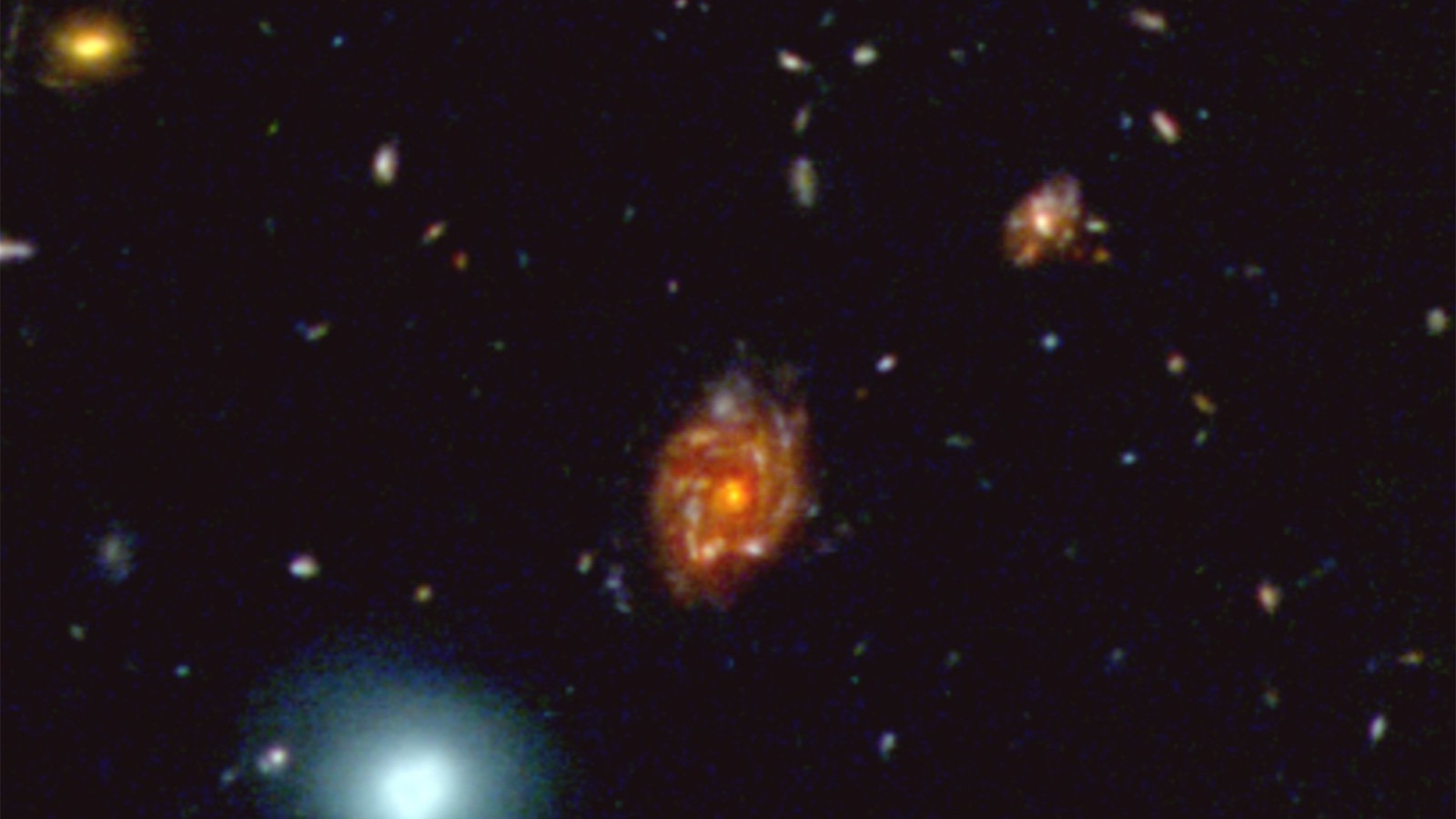
This one prominent galaxy, known as the Big Wheel and located 22 billion light-years away at present, spans ~100,000 light-years in diameter: the largest disk galaxy known at these early cosmic epochs. The smaller galaxy to the Big Wheel’s upper right is located within the same galaxy cluster/protocluster.
Credit: NASA/ESA
Most are galaxies, with light is dominated by their constituent stars.
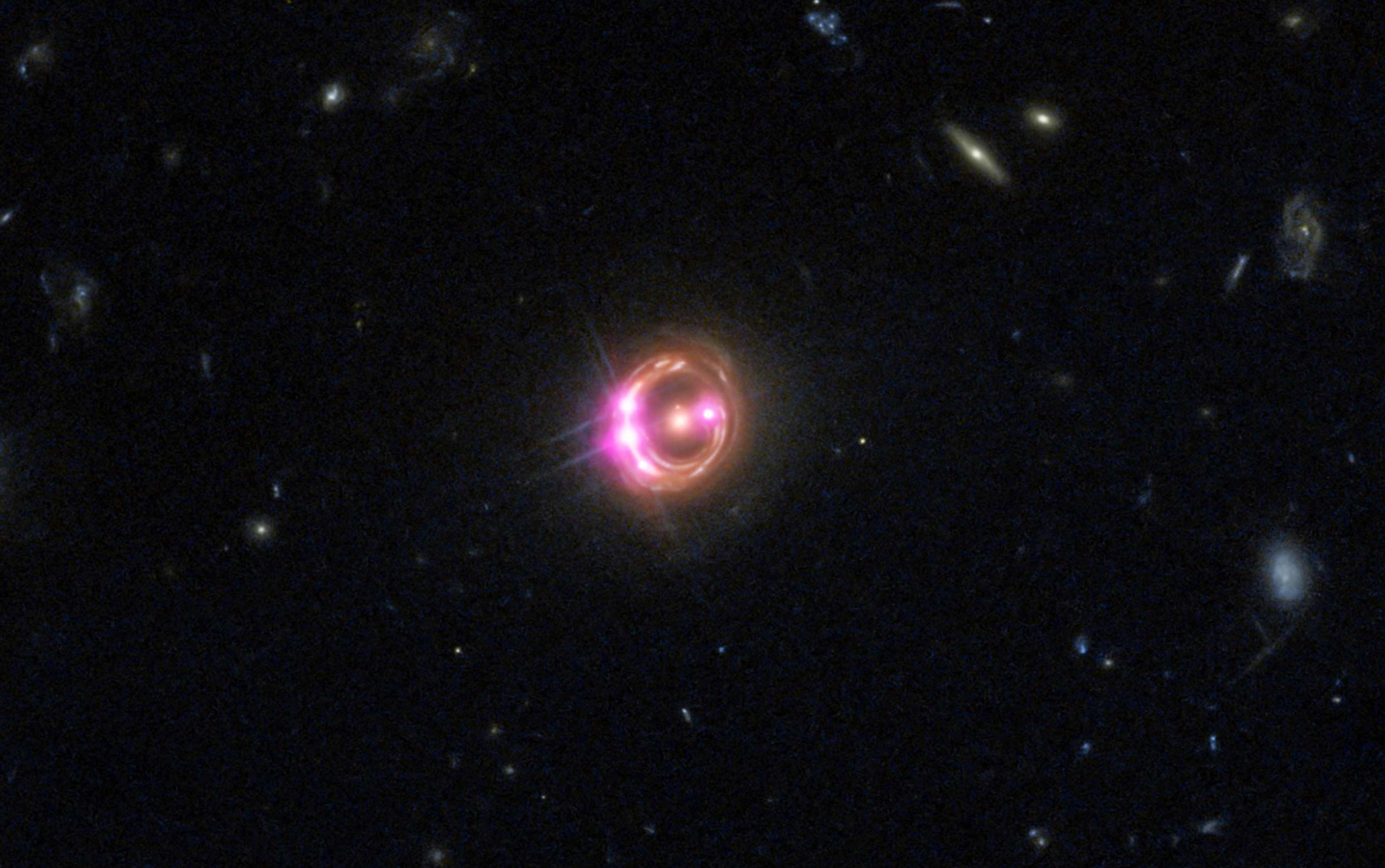
To both the left and right of a central, giant elliptical galaxy, multiple images, in X-ray light, of a quasar some ~6 billion light-years away can be seen. By combining data from NASA’s Chandra X-ray Observatory and the ESA’s XMM-Newton Observatory, scientists were able to measure the (rapid) spin of the quasar’s central supermassive black hole. This is just one of many overwhelming lines of evidence supporting the existence of black holes, with no good alternatives remaining.
Credit: X-ray: NASA/CXC/Univ of Michigan/R.C.Reis et al; Optical: NASA/STScI
The remainder are quasars, dominated by actively feeding supermassive black holes.
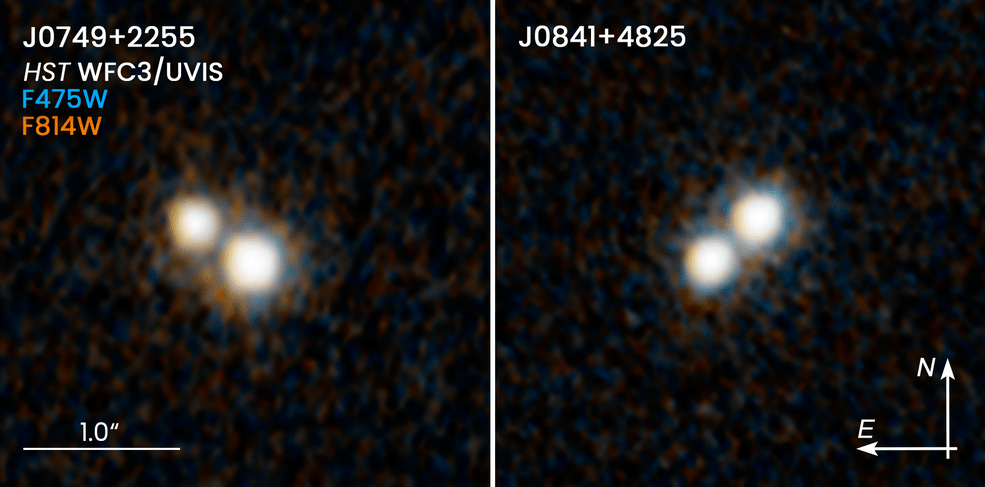
These two quasar pairs don’t possess a single supermassive black hole at the core of each, but rather two supermassive black holes separated by about 10,000 light-years apiece. The multiwavelength emission properties of these objects are required for unveiling the physical processes occurring inside.
Credit: NASA, ESA, H. Hwang and N. Zakamska (Johns Hopkins University), and Y. Shen (University of Illinois, Urbana-Champaign)
Prior to JWST, this described nearly all known luminous sources.
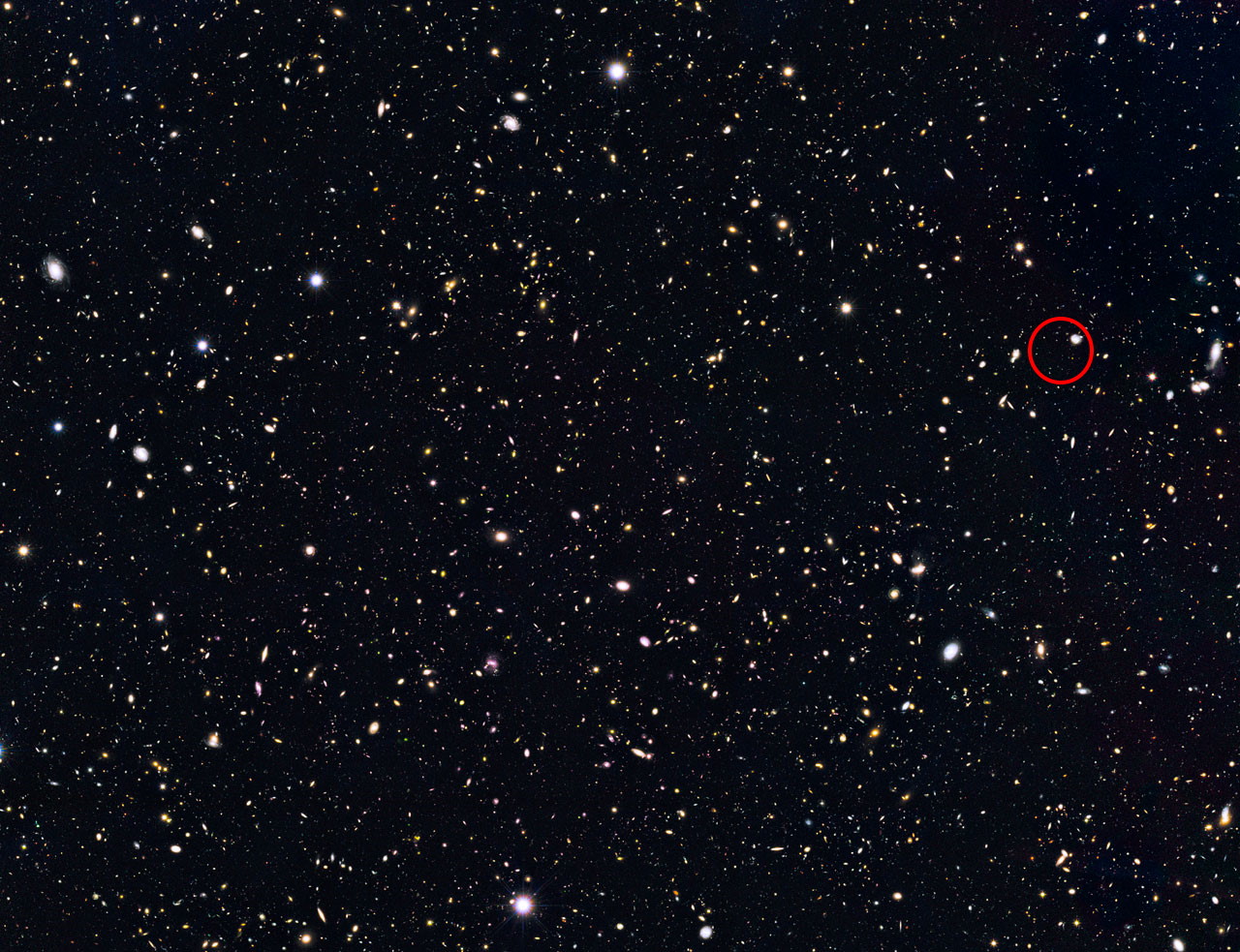
The GOODS-North survey, shown here, contains some of the most distant galaxies ever observed, a great many of which are over 30 billion light-years away already. The fact that galaxies at different distances exhibit different properties was our first clue that led us toward the idea of the Big Bang, but the most important evidence supporting it didn’t arrive until the mid-1960s.
Credit: NASA, ESA, G. Illingworth (UCSC), P. Oesch (UCSC/Yale), R. Bouwens and I. Labbé (Leiden University), and the Science Team
Only one remarkable ultra-distant object, GNz7q, didn’t fit either profile.
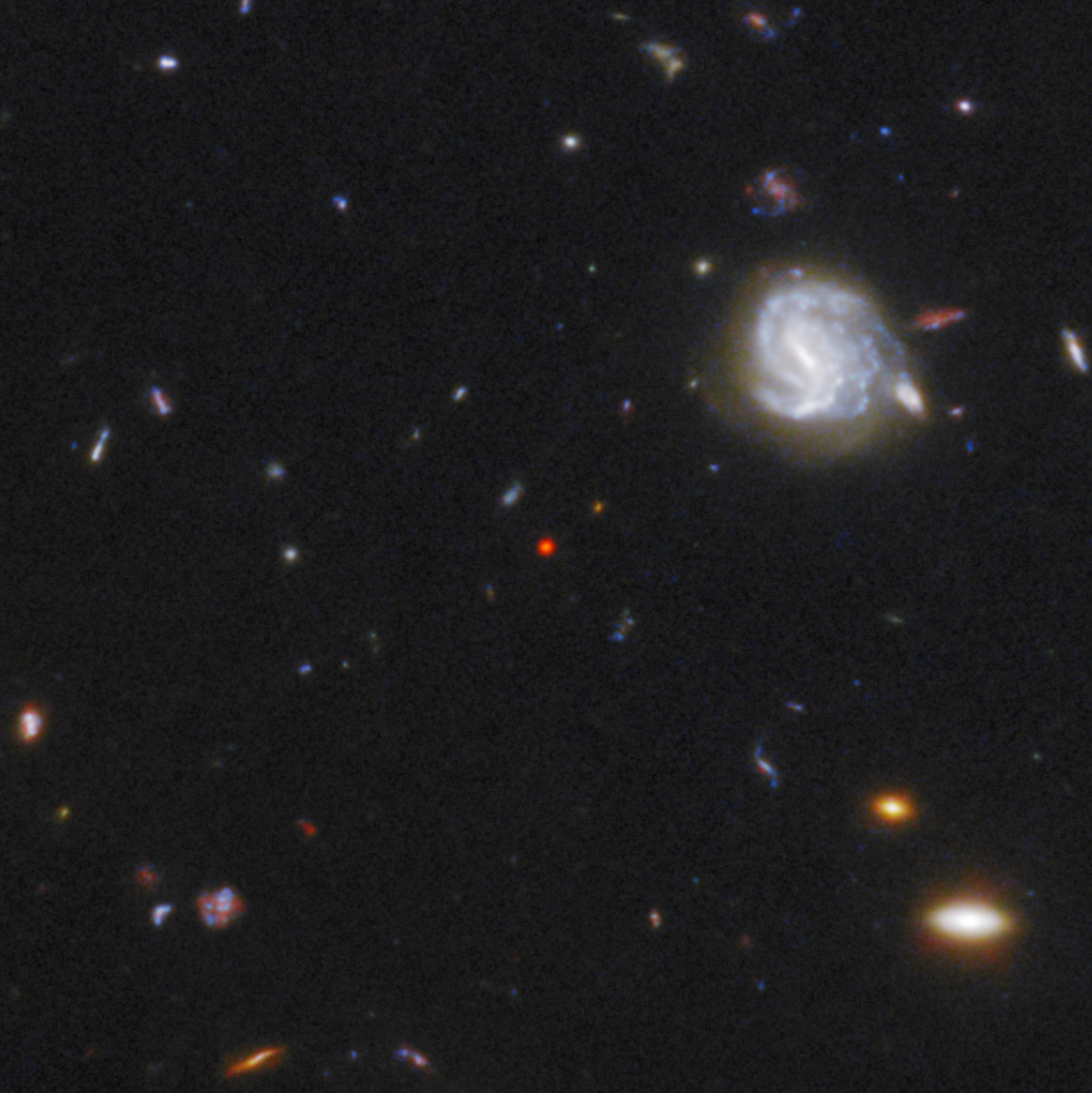
The quasar-galaxy hybrid GNz7q is seen here as a red dot in the center of the image, reddened because of the expansion of the Universe and its great distance from us. Although it’s been exposed in the GOODS-N field for over 13 years, it was only flagged as an object of interest in 2022, as its spectrum reveals properties of both galaxy and quasar. These very distant, very red, but somehow very bright objects are common in JWST’s field of view. Many of the “little red dots” seen by JWST and other observatories are brightness-enhanced by the activity of the central black hole, with some jets pointing directly along our line-of-sight.
Credit: NASA, ESA, G. Illingworth (UCSC), P. Oesch (UCSC, Yale), R. Bouwens (LEI), I. Labbe (LEI), Cosmic Dawn Center/Niels Bohr Institute/University of Copenhagen, Denmark
This bright, dust-rich, star-forming galaxy was severely reddened.
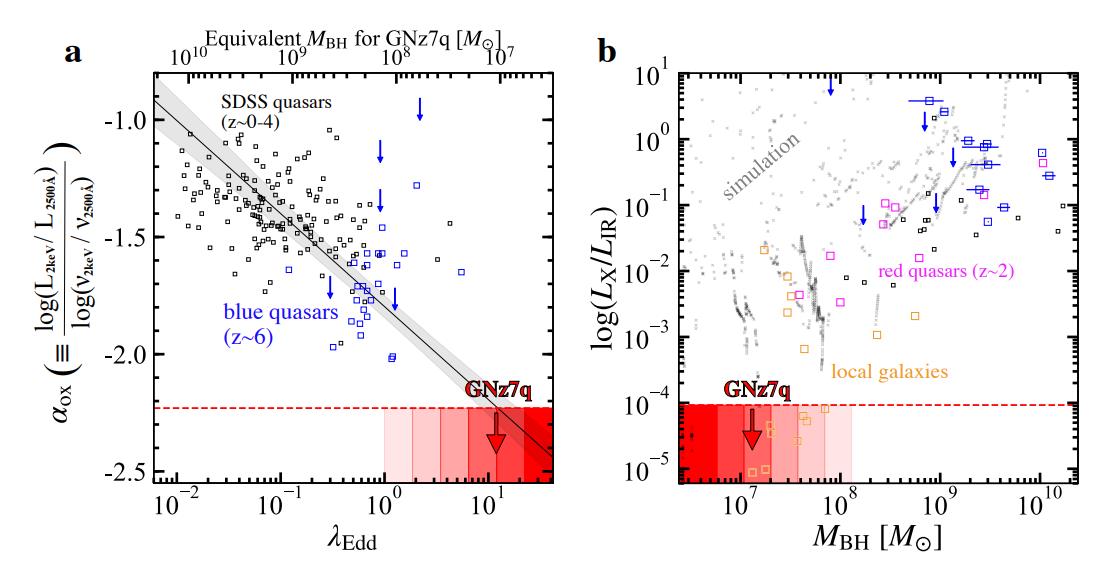
Of all the distant quasars ever found in the Universe prior to the dawn of the JWST era, GNz7q was by far, intrinsically, the reddest. The object has a supermassive black hole of a few tens of millions of solar masses, but lacks the characteristic X-ray disk emission normally seen: indicating this is our first galaxy-quasar hybrid.
Credit: S. Fujimoto et al., Nature, 2022
It also lacked characteristic disk-emission light.
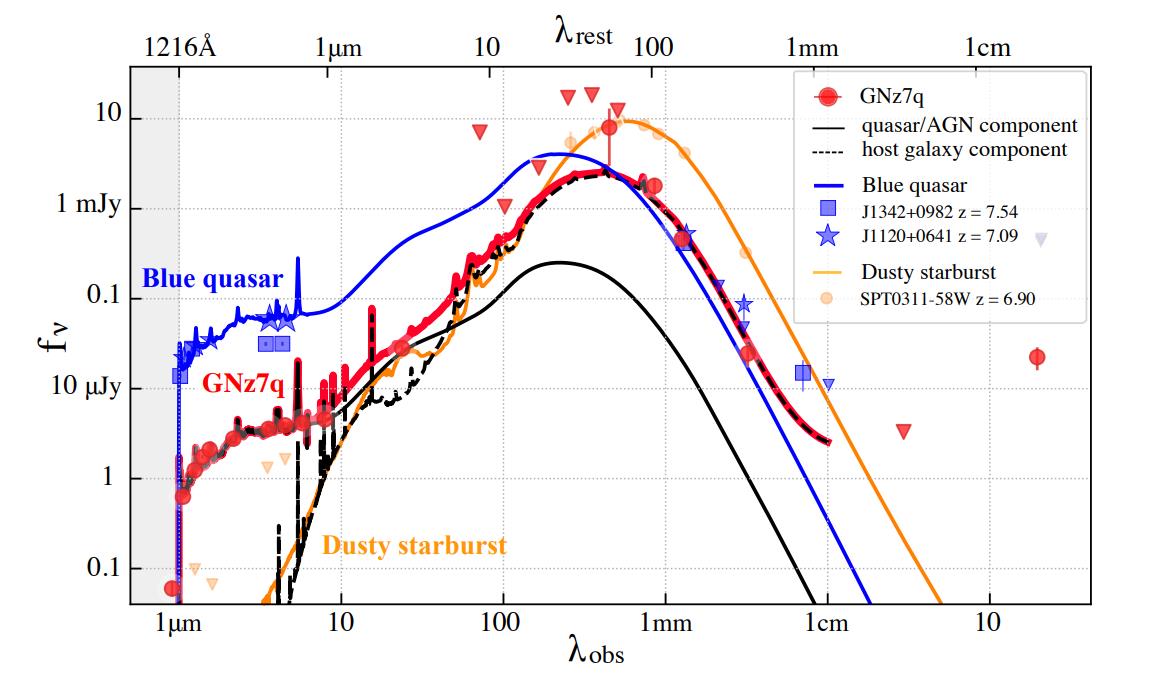
The distant object GNz7q possesses properties that don’t align with either the other galaxies or quasars seen from its epoch, just 730 million years after the Big Bang, but rather with a hybrid interpretation, as it has some, but not all, of the properties of both. Note the lack of strong short-wavelength emissions, as seen in typical blue quasars, and the lack of strong long-wavelength emissions, as seen in most dusty starburst galaxies.
Credit: S. Fujimoto et al., Nature, 2022
The leading interpretation was a dust-obscured galaxy with a quasar-containing core.
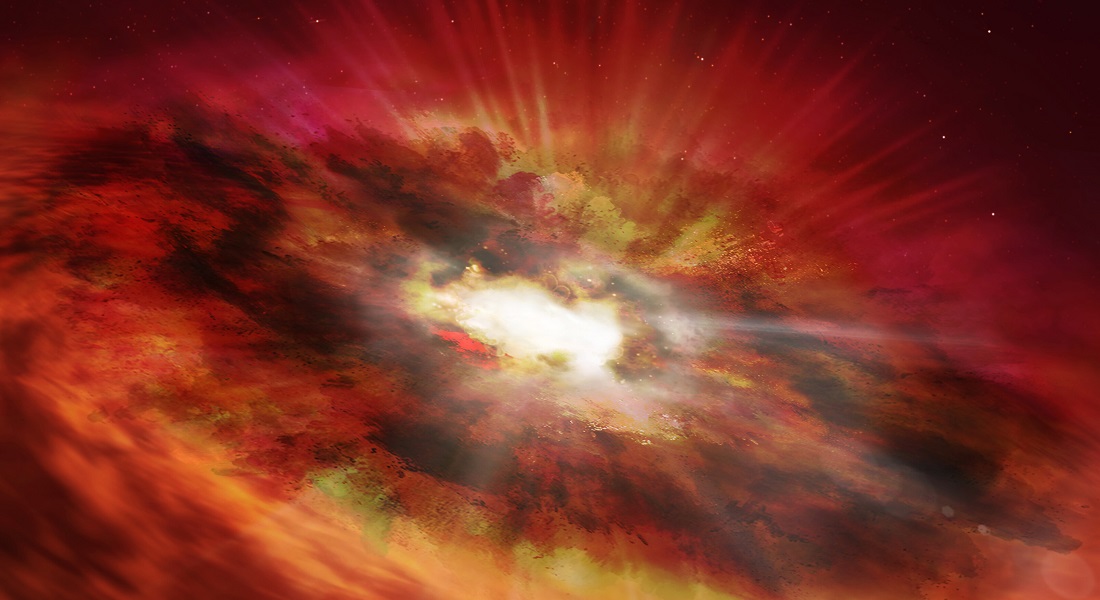
This artist’s impression of the dusty core of the galaxy-quasar hybrid object, GNz7q, shows a supermassive, growing black hole at the center of a dust-rich galaxy that’s forming new stars at a clip of some ~1600 solar masses worth of stars per year: a rate that’s about 3000 times that of the Milky Way. If the early JWST galaxies are “polluted” by an active galactic nucleus, that could be a source of bias in the initially inferred masses for these galaxies.
Credit: ESA/Hubble, N. Bartmann
Now, however, the JWST era has revealed over 300 “Little Red Dot” galaxies.
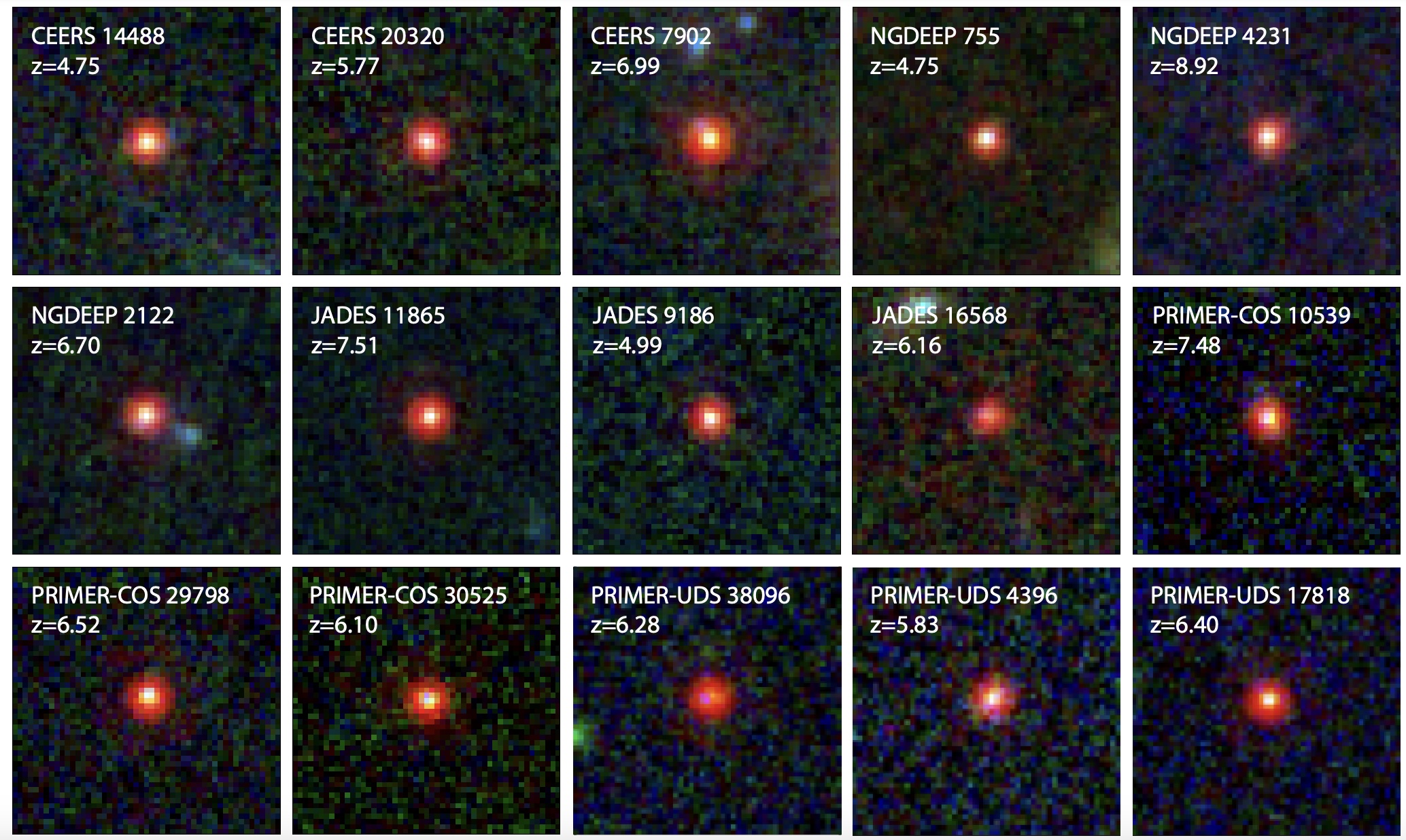
This image shows 15 of the 341 hitherto identified “little red dot” galaxies discovered in the distant Universe by JWST. These galaxies all exhibit similar features, but only exist very early on in cosmic history; there are no known examples of such galaxies close by or at late times. All of them are quite massive, but some are compact while others are extended, and some show evidence for AGN activity while others do not.
Credit: D. Kocevski et al., Astrophysical Journal Letters accepted/arXiv:2404.03576, 2025
We can look at their emitted light as a function of wavelength.
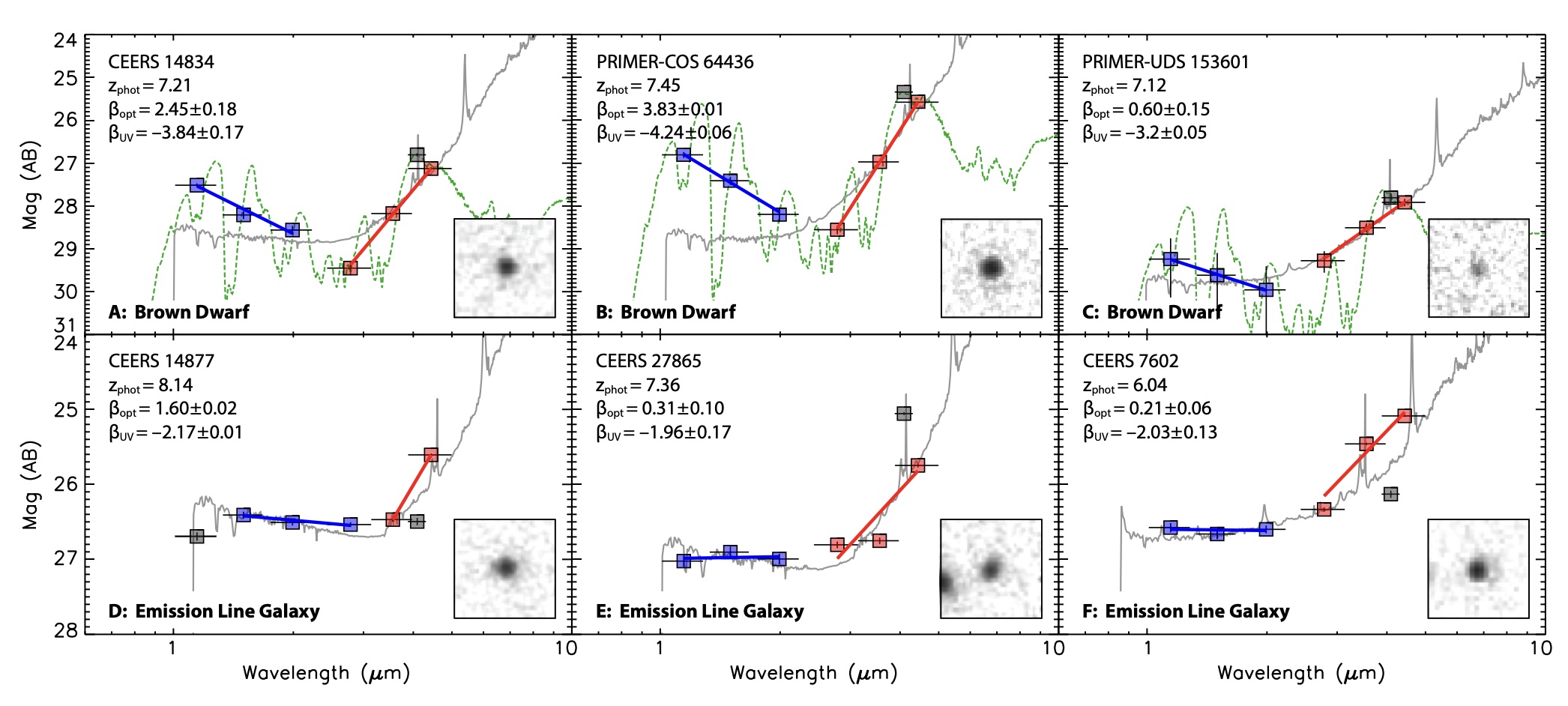
Inside each of the “little red dot” galaxies spotted in the early Universe (largely by JWST), there appears to be both a UV-rest-frame component that is dominated by stars, as well as an optical/IR component that is dominated by the activity from a supermassive black hole. By understanding and quantifying the contributions from both, one can understand the stellar mass and black hole mass components of the galaxy.
Credit: D. Kocevski et al., Astrophysical Journal Letters accepted/arXiv:2404.03576, 2025
Most display ultraviolet light, indicating stars, plus optical/infrared light, indicating active black holes.
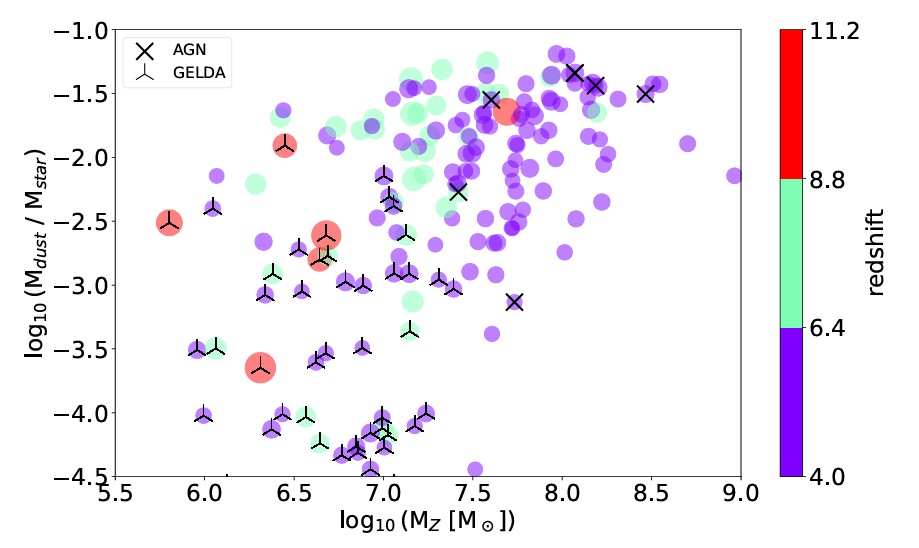
This plot shows galaxies from the first ~1.5 billion years of cosmic history, color-coded by redshift and plotted by their metallicity (x-axis) as a function of the dust-to-stellar mass ratios (y-axis) found within them. The majority of low-metallicity galaxies are also dust-poor and are known as GELDAs, dominating the very early Universe, while later-time, more dust-rich galaxies are much more enriched in heavy elements.
Credit: D. Burgarella et al., Astronomy & Astrophysics accepted/arXiv:2504.13118v2, 2025
Others appear more point-like, with little dust: suggesting an ongoing burst of star-formation.
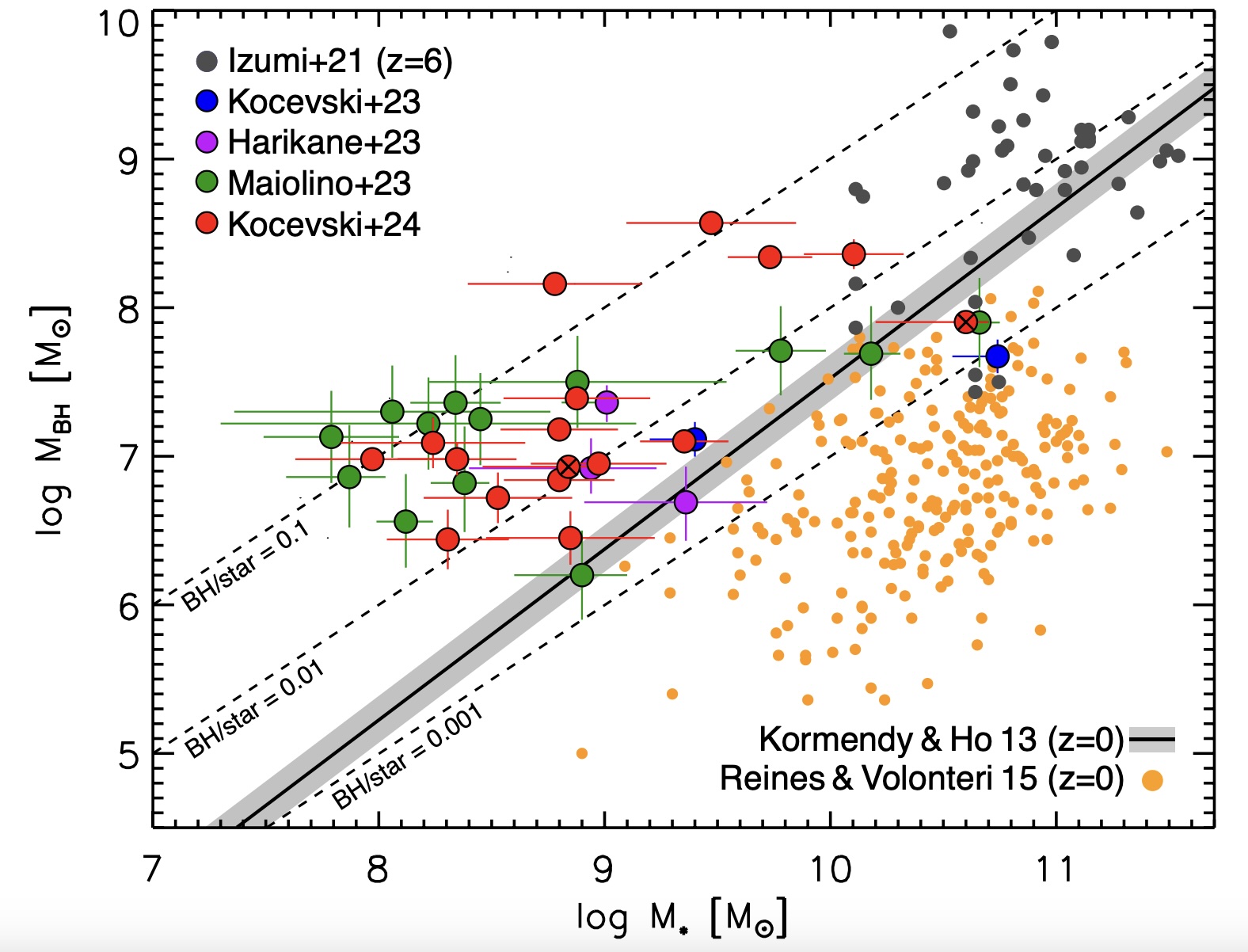
When the data from a variety of “little red dot” galaxies are broken up into their stellar mass component versus the component arising from an active supermassive black hole, the mass ratios of the galaxy’s total stellar mass compared with the supermassive black hole’s mass can be determined. Many, and perhaps even most, of these black holes are found to be significantly overmassive: at much more than 0.1% of the mass of the stellar component.
Credit: D. Kocevski et al., Astrophysical Journal Letters accepted/arXiv:2404.03576, 2025
We now know that GNz7q was the first Little Red Dot ever found: a true galaxy-quasar hybrid!
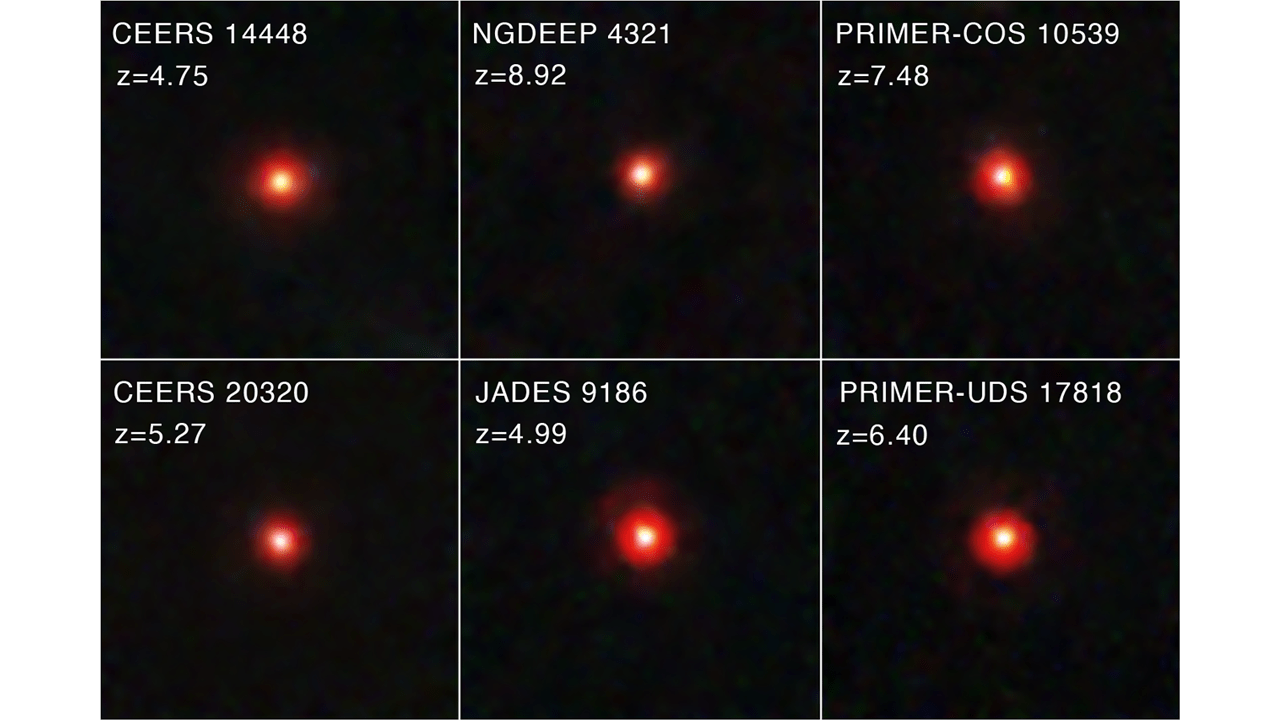
These six “little red dot” galaxies are examples of objects, each detected from a different observational program, where the brightness from the stars within them alone cannot explain what we’re seeing after only such a short amount of cosmic time has elapsed. Despite the premature assertions by some that cosmology is wrong, it’s more likely that our naive assumption about the light from these objects being entirely due to stars is wrong. Some “little red dots” exhibit bursty star formation, others exhibit quasar-like enhancements from active supermassive black holes, and a few objects have significant contributions from both.
Credit: NASA, ESA, CSA, STScI, Dale Kocevski (Colby College)
Mostly Mute Monday tells an astronomical story in images, visuals, and no more than 200 words.
Sign up for the Starts With a Bang newsletter
Travel the universe with Dr. Ethan Siegel as he answers the biggest questions of all.
